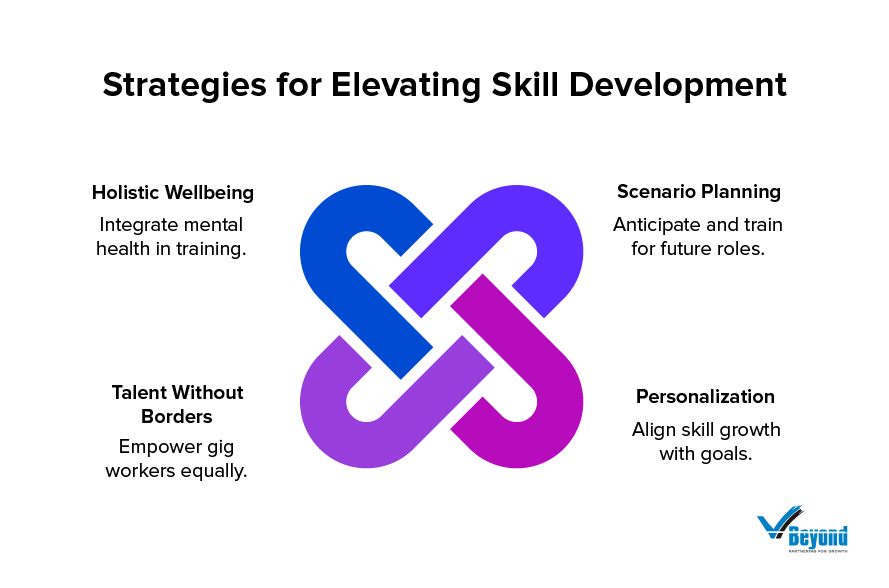As 2025 approaches, are we building skills for relevance—or resilience?
The pace of change is unrelenting, and our approach to skill development must evolve just as rapidly. More than about closing gaps, this is about creating a workforce that can adapt to challenges we can’t yet foresee. The convergence of technology, generational shifts, and global uncertainty demands a reimagined approach. This is the moment to invest in bold, inclusive, and forward-thinking strategies that ensure our people—and our organizations—don’t just survive the future but shape it.
Upskilling and Value Alignment: Workforce Trends Shaping the Future
The PwC Global Workforce Hopes and Fears Survey 2024 highlights critical insights into the evolving demands of the modern workforce, directly informing the need for a redefined approach to skill development. The survey reveals that employee upskilling is now a core expectation, with 69% of workers expressing the desire for training and development opportunities to stay competitive in their roles. This demand spans all levels of employees, emphasizing the need for inclusivity beyond top performers.
Another striking data point is the concern over job security, with 27% of workers fearing their roles could be automated within five years. This highlights the urgency of preparing employees with skills that ensure adaptability, such as digital fluency and problem-solving. Simultaneously, only 30% of respondents believe their employer currently provides adequate opportunities to acquire these future-critical skills.
The findings also underscore the importance of aligning skill-building with employee aspirations: 48% of workers said they would leave their current job if they felt their personal values were misaligned with the company’s approach to growth and innovation. This signals a clear need for development programs that not only address skills but also align with individual purpose and career trajectories.
Lastly, the survey underscores the value of empathy and inclusivity in workforce transformation, especially in diverse and distributed teams. Employees increasingly expect personalized support in skill-building that considers unique challenges, such as socioeconomic and regional barriers to access. These insights provide a strong foundation for innovative strategies that prioritize adaptability, inclusivity, and alignment with future needs.
Strategies to Elevate Skill Development in 2025 and Beyond
Having understood the critical insights from the global workforce trends, we can now delve into actionable strategies that address these challenges and position organizations for future success in skill development.
- Scenario Planning: Charting Skills for Future Workforce Development
To build resilience in skill development, organizations must think beyond immediate disruptions and engage in dynamic, cross-industry foresight. This involves identifying unexpected but plausible shifts, like the blending of healthcare and tech, or the potential rise of biofabrication industries. Training and development programs can then prepare employees for roles at the intersection of emerging fields, creating talent pipelines for hybrid domains that don’t yet exist but are likely to emerge.
For example, imagine a retail company preparing for the “experience economy” by training employees in experiential design and virtual reality storytelling, anticipating the rise of immersive shopping. Similarly, a manufacturing firm could prepare for “hyperlocal economies” through employee upskilling in additive manufacturing (3D printing) and materials innovation. These programs equip employees to lead transformational initiatives when those trends materialize.
The key is to constantly revisit scenarios, embedding agility into the workforce. Scenario planning is like a feedback loop, informed by real-time data and insights from adjacent industries. Organizations that do this successfully create skill-building frameworks that are fluid, interconnected, and capable of evolving alongside the global economy.
- Personalization: The Bridge Between Ambition and Adaptation
While scenario planning helps organizations anticipate future disruptions, personalization ensures that employees are prepared to thrive within those scenarios. The challenge lies in tailoring skill-building to individual aspirations while aligning with broader organizational strategies. This requires moving beyond static training modules to create adaptive and meaningful development journeys.
- Intelligent Allocation of Resources for Tailored Growth
A forward-thinking personalization strategy begins with intelligent resource allocation, ensuring that training investments deliver maximum impact. Organizations can use workforce analytics to pinpoint where upskilling aligns most closely with strategic priorities. For instance, micro-learning pathways can be designed to target niche skill gaps that map directly to future scenarios outlined in planning exercises. By linking individual development with broader workforce transformation goals, companies can ensure their talent pool evolves in lockstep with the business.
- Balanced Skill Development: More than AI
AI skill-building is essential but must be part of a balanced portfolio. While scenario planning may emphasize emerging technical competencies, a nuanced personalization framework includes cross-disciplinary AI fluency. For example, training non-technical teams to collaborate effectively with AI systems fosters agility across the organization. Beyond technical skills, personalization must incorporate adaptability and problem-solving, equipping employees to pivot seamlessly between new challenges. By embedding AI alongside critical human skills like creativity and ethical decision-making, organizations prepare employees for hybrid roles that future scenarios demand.
- Soft Skills at Every Layer
Personalization also addresses the growing demand for soft skills in a tech-driven world. Tailored programs for leaders might include managing digital transformations with empathy, while frontline workers can focus on customer-centric problem-solving. By linking these skills to the uncertainties identified in scenario planning, organizations ensure that their workforce is technically proficient, emotionally intelligent and collaborative—a critical differentiator in future workplaces.
- Integrating Individual Growth into Organizational Ecosystems
Finally, personalization must extend beyond the individual to consider the broader skill ecosystem. Purpose-built dashboards can map employees’ evolving skills not only to their personal goals but also to team-level and organizational needs identified in scenario planning. This ecosystem view fosters a sense of shared purpose and ensures that individual development drives collective success. Additionally, personalized pathways can connect employees with cross-functional opportunities, enabling them to contribute directly to transformational projects that prepare the organization for identified future scenarios.
- Talent Without Borders: Democratizing Workforce Growth
While companies have started extending some training opportunities to gig workers and freelancers, these efforts are often limited in scale and scope. Current initiatives largely focus on transactional upskilling, such as project-specific certifications or basic onboarding modules, leaving significant gaps in creating holistic, future-ready talent ecosystems. Moreover, these programs rarely integrate gig workers into the broader workforce learning culture, keeping them on the periphery rather than as integral contributors to long-term organizational growth.
To bridge these gaps, organizations must design scalable, adaptive ecosystems that treat gig workers as equal partners in workforce development. This includes offering long-term learning pathways that align with both the organization’s future needs and freelancers’ career aspirations. For example, creating subscription-based access to advanced learning platforms for freelancers can provide continuous upskilling opportunities that are not tied to specific projects. These platforms could also gamify learning progress, encouraging sustained participation.
Additionally, integrating gig workers into collaborative knowledge-sharing systems can ensure they’re part of the organizational learning culture. For instance, cross-functional mentorship programs can pair gig workers with full-time employees to exchange expertise. This not only helps gig workers develop organizational insights but also equips internal teams with diverse, external perspectives, fostering innovation and inclusivity.
Finally, organizations should focus on building mutually beneficial skill ecosystems by formalizing feedback loops where gig workers can contribute insights on training effectiveness and industry trends. This can be done through regular surveys or virtual town halls. By involving freelancers in the design and iteration of training programs, companies create a more engaged, adaptable workforce while positioning themselves as preferred partners in the gig economy.
- A Holistic Approach: Integrating Mental Wellbeing and Transition Support
In addressing the complexities of modern work, organizations must think beyond technical skills and acknowledge the emotional dimensions of skill development. Integrating mental wellbeing into training programs, alongside tailored support for employees transitioning out of roles, offers a transformative and human-centered approach.
- Embedding Mental Wellbeing in Skill Design
While some organizations have made strides in mental health training, much more can be done to fully integrate wellbeing into skill-building frameworks. By focusing on role-specific mental resilience, organizations can tailor training to the unique psychological pressures of different jobs. For instance, sales teams could benefit from resilience strategies for managing rejection, while creative teams might learn how to navigate burnout during intensive innovation cycles.
Technology offers untapped opportunities for real-time wellbeing adaptation. AI-powered learning platforms could analyze cognitive fatigue or stress indicators during training, dynamically adjusting the pace or recommending breaks. This adaptive learning experience could foster deeper engagement while safeguarding mental health.
Moreover, workforce wellbeing dashboards could provide aggregated insights into organizational resilience. Leadership could use this data to allocate resources proactively, addressing patterns of burnout or stress before they escalate. The systemic approach ensures training builds technical skills and reinforces emotional stability across the organization.
- Supporting Skill Development for Laid-Off Employees
Layoffs are often associated with disruption and uncertainty, but they can also present opportunities for transformation. Organizations can reimagine this process by creating skill-linked employment pathways, partnering with industry networks to provide internships or apprenticeships in future-critical fields. These efforts ensure that upskilling directly translates to employability.
Another bold innovation is offering future-proof skill guarantees, where laid-off employees receive ongoing access to learning platforms or career counseling for a fixed period. This commitment to their growth extends the organization’s responsibility beyond the immediate severance, fostering goodwill and brand loyalty.
Finally, building alumni ecosystems can foster collaboration and resilience. By connecting laid-off employees with company alumni and external mentors, these ecosystems create opportunities for shared learning and practical skill development. Such networks extend the impact of training programs, transforming layoff experiences into career reinvention.

Innovating the Workforce: Lessons from Amazon and Mastercard
Skill development is taking a bold leap forward as companies leverage large-scale investments and cutting-edge technologies to future-proof their workforce. Two real-world examples, as featured in Financial Times, are:
Amazon’s Upskilling 2025 Initiative exemplifies this transformation. With a $1.2 billion investment, the program aims to upskill 300,000 employees across diverse roles by 2025. Employees can access a range of learning opportunities, from free college tuition to certifications in high-demand fields like cloud computing and machine learning. This initiative not only empowers employees to transition into technical and healthcare-related roles but also tackles broader workforce challenges by enhancing job security in the face of automation. By aligning training with both current and future industry demands, Amazon demonstrates how skill-building can serve as a strategic response to rapid technological advancements.
Another standout example is Mastercard’s Unlocked platform, which uses AI to revolutionize employee learning. The AI-driven system evaluates individual skillsets and career aspirations, mapping them to personalized training resources and internal opportunities. By fostering internal mobility, “Unlocked” reduces skill redundancy and aligns employee growth with the company’s evolving needs. For example, employees interested in transitioning into data analytics or digital security can receive tailored learning pathways, equipping them for critical roles in emerging domains. Beyond filling skill gaps, this approach deepens employee engagement and retention by prioritizing growth and adaptability.
Conclusion
As we edge closer to 2025, the workforce narrative is increasingly shaped by both promise and uncertainty. For organizations and their leaders, this duality underscores a critical challenge: how to keep the workforce not only prepared but also engaged and inspired amidst relentless disruption. The answer lies in building a culture of continuous evolution—where skill development transcends technical gaps to address adaptability, purpose, and resilience. Leadership today is tasked with more than just managing transitions; it must navigate this delicate balance, ensuring the workforce remains dynamic, connected, and ready to seize opportunities.
Ready to future-proof your workforce? Partner with us to create adaptive, engaged teams prepared for the challenges of 2025 and beyond.

